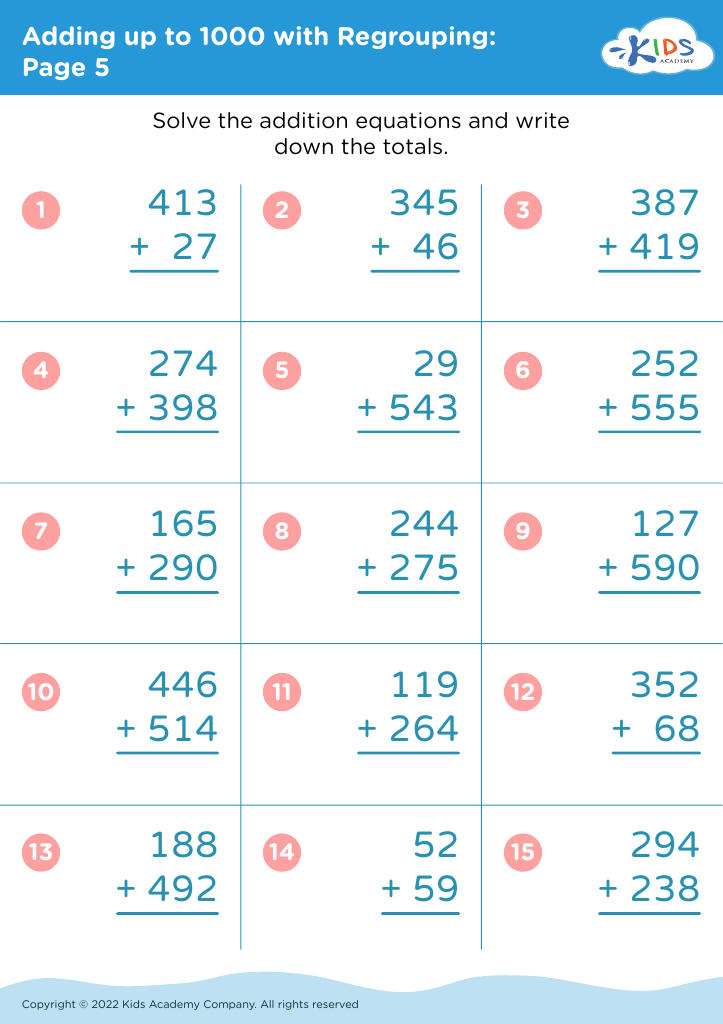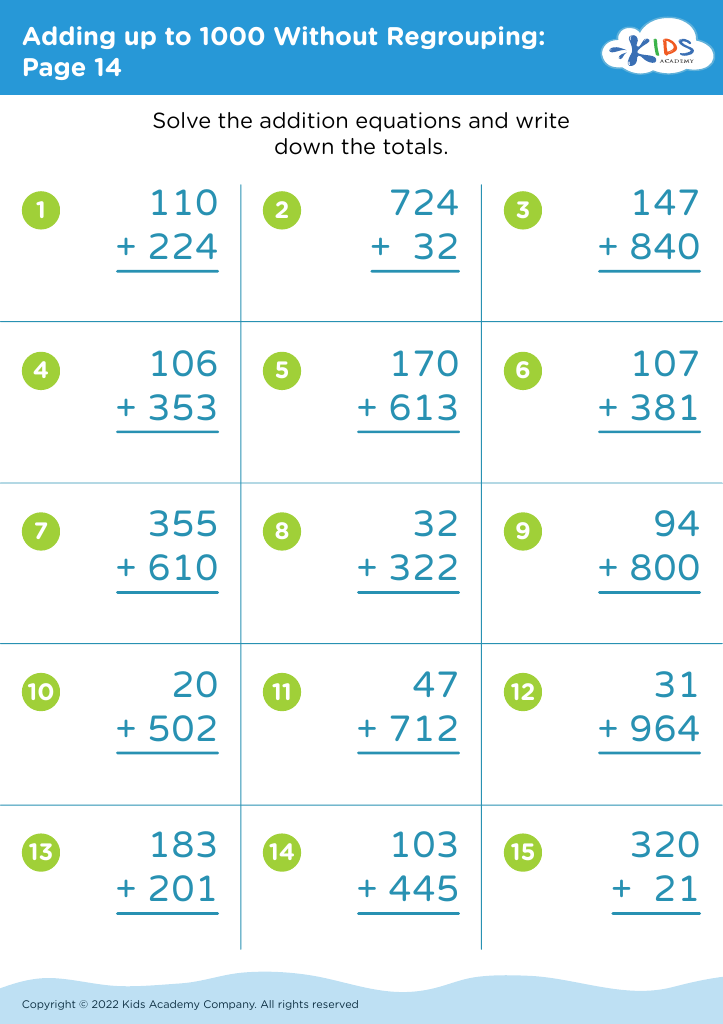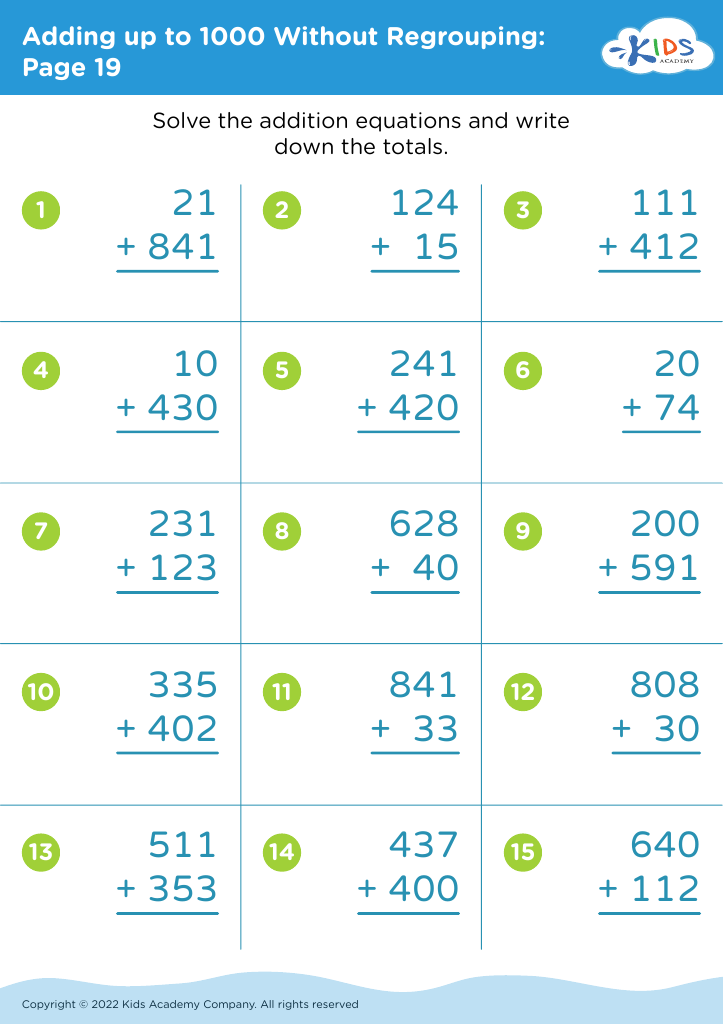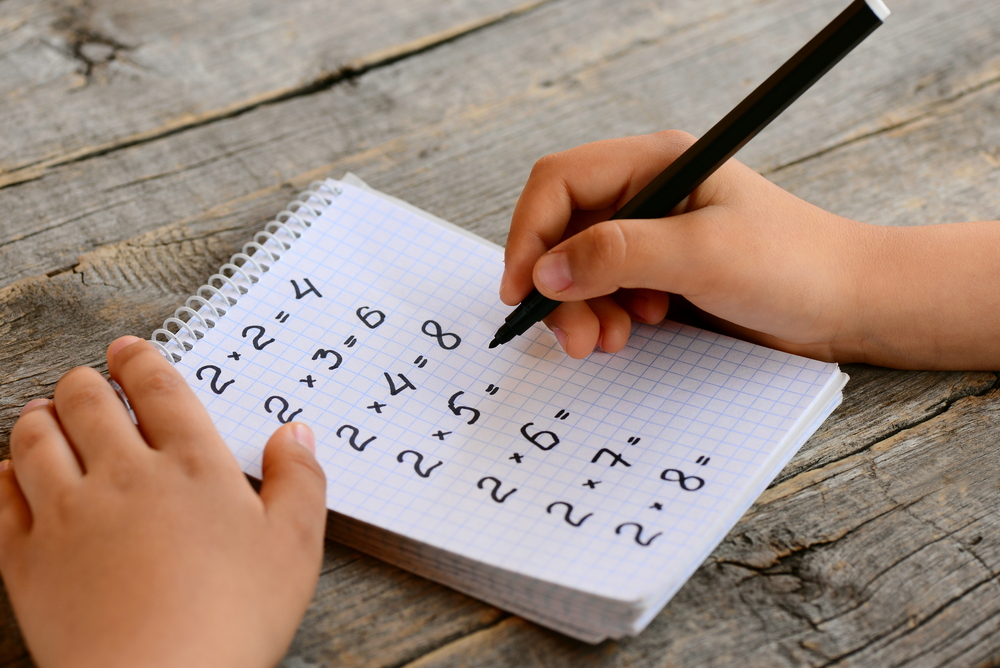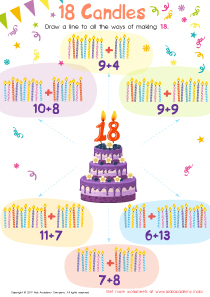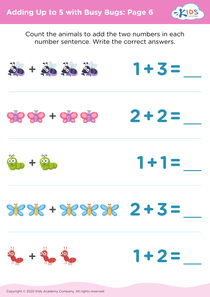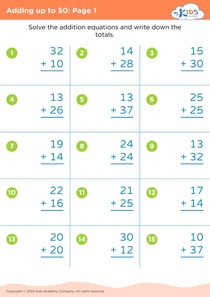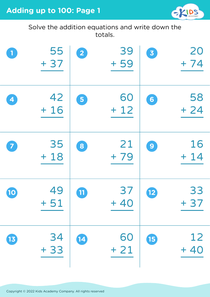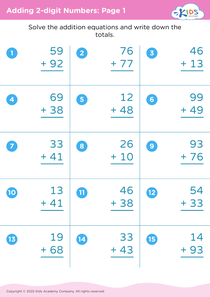Color recognition Adding up to 1000 Worksheets for Ages 7-9
3 filtered results
-
From - To
Unlock the joy of learning with our "Color Recognition Adding up to 1000 Worksheets" designed for ages 7-9! These vibrant, printable worksheets merge essential math skills with engaging color activities, helping children practice addition up to 1000 while enhancing their color recognition abilities. Perfect for reinforcing classroom learning at home, these worksheets feature fun problems and visual exercises that keep young learners excited and motivated. Ideal for improving concentration, fine motor skills, and math proficiency, these activities ensure a comprehensive, enjoyable, and educational experience. Give your child the tools to excel in math with our dynamic color recognition worksheets!
Color recognition and being able to add up to 1000 are crucial skills for children aged 7-9, as they lay the groundwork for more advanced learning.
Color recognition plays a fundamental role in a child's cognitive development. Recognizing and distinguishing between colors helps children categorize and describe the world around them. This skill enhances their descriptive language skills, enabling them to communicate more effectively. Additionally, understanding colors is a stepping stone for deeper learning, such as understanding patterns, sorting objects, and beginning to grasp more complex geometrical concepts.
On the mathematical front, being able to add up to 1000 is essential for young learners. At this age, children advance from simple arithmetic to more complicated operations, which are essential for everyday tasks and academic growth. Understanding how to add large numbers enhances their number sense, teaching them about place value, carrying over in addition, and practical problem-solving skills. These foundational skills are important as they lead to more complex mathematical operations and reasoning required in higher education levels and daily life activities.
Overall, ensuring children master these skills equips them with essential tools to better understand and engage with their environment, fostering both their intellectual growth and practical life skills. Thus, both parents and teachers should prioritize and actively encourage the development of color recognition and arithmetic skills up to 1000.
